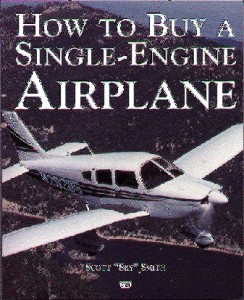We still get asked why only one broker can get an aviation insurance quote at a time. So let me try and summarize this issue.
We shop all markets that are available for a specific type of aircraft. But, the aviation insurance industry is different than buying car insurance. In car insurance you can call all the agents on the same block and they can quote the same companies and all offer you a quote. Aviation insurance companies will release a quotation for your aircraft insurance to only ONE broker at a time.
If our agency has attempted to quote all applicable markets (except Avemco who is a direct insurance underwriter and doesn’t use outside agents) but has been blocked from getting quotes it is because another broker is doing the same thing.
Being blocked means you have contacted more than one broker and they have also been quoting your aviation insurance risk. By allowing more than one broker to get quotes, you have taken away each brokers ability to quote the same companies.
You are probably thinking that it doesn’t make sense or seem fair, but aviation underwriting is somewhat subjective and by limiting the number of quotes released, an underwriting company can be more consistent. Now, on a new insurance risk a couple of companies have started to let more than one broker quote. But that’s not a universal trend, yet. I think as more companies are come more computerized that will happen more often. The problem with computerized quotes, there is less of an opportunity to deviate from the guidelines. If the computer says no you can’t get insured, that’s all you might get from that company. No options or flexibility.
Our goal is to provide the best customer service possible and we hope to do that through competitive quotes, aviation expertise and personal contact. We do quote all companies available.
I believe we have a number of advantages over other brokers. We didn’t just get into the experimental market in the last few years as an agency; we have been working with the experimental aircraft market since I started in the aviation insurance business in 1985. I am a pilot, I have owned and flown experimental aircraft and I have been involved in aviation since I was a kid. I married into an aviation family and my wife grew up in an FBO and is my partner in the business. I have been an author and columnist for years on aviation topics and in aviation magazines. I still attend aviation events and give seminars for owners.
That’s said, if you have run into a situation where you contact more than one broker you might be asked to sign a “Broker of Record” letter.
This letter would tell the underwriters that you want one broker to be your broker and that all the quotes should be released to that broker. Hope that helps.


